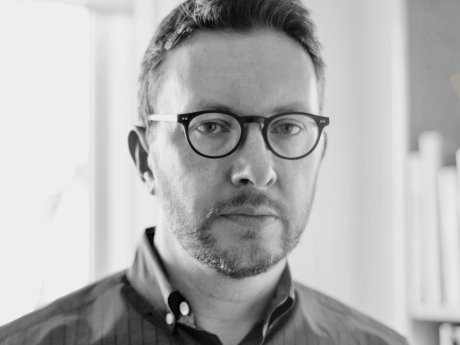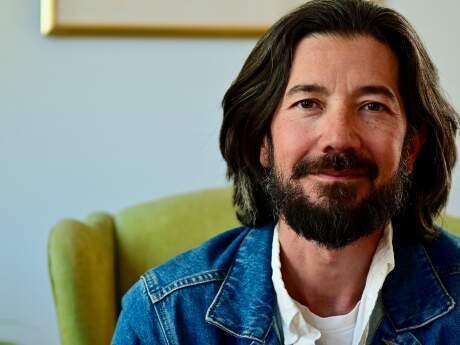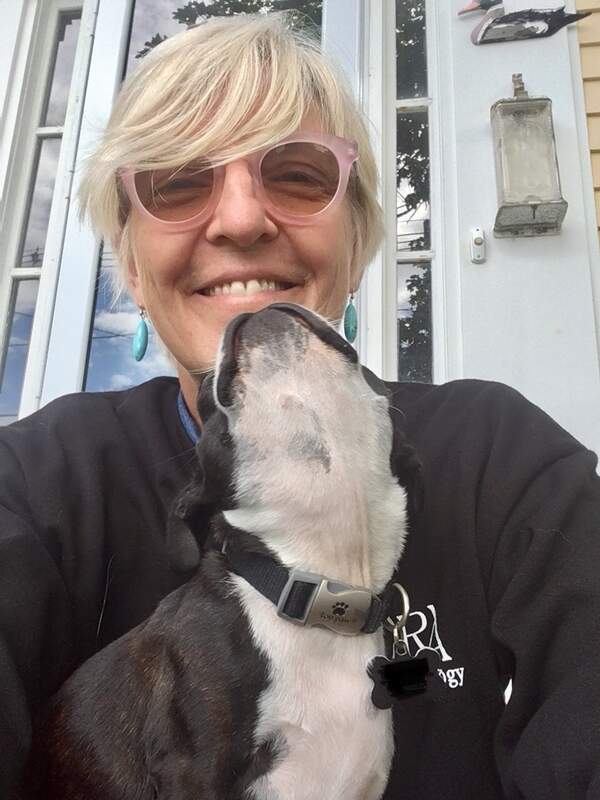Stopping By
Stopping by with Randy Kennedy

Randy Kennedy is a writer, editor, and curator. He was on the staff of The New York Times for 25 years, more than half of that time writing about the art world. His first novel, Presidio, was published by Simon & Schuster in 2018. Since 2017 he has served as director of special projects for the gallery Hauser & Wirth and as editor-in-chief of the gallery's magazine, Ursula.
What is the last thing you watched that moved you?
I have a minor obsession with the 1973 television broadcast showing Secretariat winning the Belmont Stakes. Whenever I’m depressed, I watch it and it makes me weepy because it’s so beautiful and then I feel better. Secretariat seemed to be running that day simply for the joy of running. He’s so far ahead at the finish, the rest of the horses might as well be in a different race, in a different city. It’s two minutes and twenty-four seconds of distilled natural grandeur.
What is a book that changed or greatly influenced your life?
When I was thirteen or fourteen I stayed up one night, camped out on the floor in a hallway near a heater, and read Waiting for Godot. An English teacher had urged it on me. It was the first piece of writing that took me fully out of myself. I was an avid reader, mostly of science fiction, but up to that point, I had no idea what language could do. I still have the Grove Press paperback copy the teacher gave me. And I can still remember the smell of the paper that night, those skeletal sentences, the gallows humor I didn’t understand but registered in my gut. Much later, I came across something Beckett told an interviewer, a sentiment that has had a big influence on my writing: “…if you really get down to the disaster, the slightest eloquence becomes unbearable.”
What is your first memory of poetry?
The first poem I remember vividly is Larkin’s “Church Going.” I was at a small college in West Texas. I’d come from a small town, engulfed, as Naipaul once put it, in “a cloud of unknowing,” more like an entire weather system of unknowing. I was a pretty devout Baptist at the time. Larkin’s poem—about walking into an empty church and wondering what will become of such ornate buildings after religious belief ebbs away—outraged me. I couldn’t stop thinking about it. The beauty of the lines was particularly galling given their apostasy. It remains one of my favorites by Larkin; I keep returning to the passage in which he imbibes the church’s “tense, musty, unignorable silence, brewed God knows how long” and says: “Hatless, I take off my cycle clips in awkward reverence….”
How has this last year changed you, and what is something that happened/you experienced/you learned, that you will take with you into a post-pandemic world?
I’m a fairly solitary person. The pandemic showed me that I need to be with people—in rooms, offices, restaurants, bars, streets, even subway cars—more than I ever knew I did. Digital humanity is a hellscape.
Who or what is your greatest creative influence?
At the risk of copping out, I guess I’d say the things I’ve read that I’ve loved deeply. I’m one of those people for whom certain combinations of words arranged in exactly the right way makes life worth living—and there are passages in Denis Johnson, Roberto Bolaño, Herman Melville, Clarice Lispector, Franz Kafka, Fernando Pessoa, Thomas Bernhard and a few others that approach that kind of perfection for me. Whether we want to admit it or not, every last comma counts.
If you were to choose one poem or text to inscribe in a public place right now, what would that be? And where would you place it?
I’ve always loved the primeval spookiness of the Middle English “earth upon earth” verses, by the hallowed Anonymous. I’d put this translation—“Earth took of earth earth with woe / Earth other earth to the earth drew / Earth laid earth in an earthen trough / Then had earth of earth, earth enough”—on a huge plaque in the middle of Times Square, as a vanitas to confound tourists.
What do you see as the role of art in public life at this moment in time?
As the above suggests, I think art in public life should be difficult to make immediate sense of, something in the increasingly corporate built environment and culture that stops you or at least startles your senses and your brain. Lawrence Weiner said the role of the artist was to be perplexed in public. At its best art should perplex, even irritate, trouble the waters of coherence. The artist Richard Nonas offered my favorite formulation of this attitude: “I don’t want answers from art. I want more questions. What interests me is uncertainty…almost-clarity about not-quite-confusion.”
What do you want people to take away from your work?
A palpable sense of temporarily inhabiting the consciousness of another person. And later, I hope, some idea of what it feels like to be alive right now. For me, both of these always seem to be bound up with the working class, in which I was raised.
Are you working on anything right now that you can tell us about?
I’m working on a second novel very loosely based on the life of the artist Martín Ramírez and also on the lives of Robert Walser and Adolf Wölfli, set in a mental hospital in the Sacramento Valley in the 1940s and 1950s.
What are you hopeful for?
I’m hopeful that the United States can eradicate the cancer that guns now represent in our society. And I hope that we still have to power to do something to keep the planet habitable for those who come after us.


